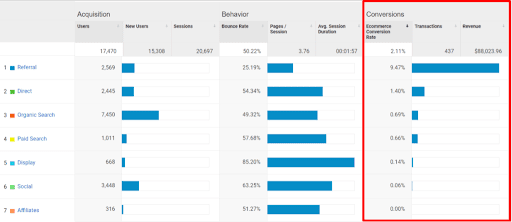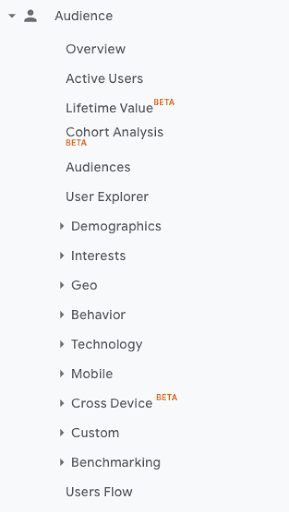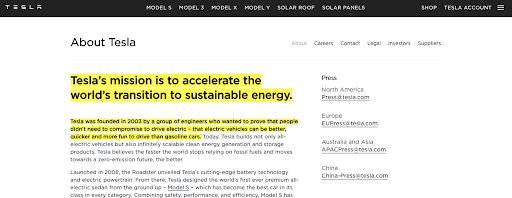The 5 Key Stages to Product Launch Marketing Plan Success—For Any Team, In Any Industry
Sometimes you have to wait months to see if your product launch marketing strategy was successful. On rare occasions, you get confirmation in 1 hour or less.
In June of 2019, I experienced Marketing Director’s Nirvana when my team and I watched in real-time as our eCommerce client sold over $400,000 worth of new product in just 40 minutes on Kickstarter.
We’d go on to sell more than $1 million of photography retail product in 60 days during a crowdfunding launch campaign that was supported by integrated content marketing, influencer marketing, PPC advertising, PR, and SEO.
In my 16 years in marketing, never have I reaped this kind of “instant” gratification. I put the word “instant” in quotes because getting these results actually took months of planning… and a dedicated team of in-house marketing staff and outsourced agency support.
Whether your marketing team is starting with millions of warm prospects or an email list of just a few thousand, the way to win at product launch is with careful, data-driven planning.
That might sound overwhelming, but here’s the good news: There are fundamentals that go into any good digital marketing strategy for a product launch or rebrand.
So how can your marketing team pull off a massively successful product launch? In this article, I’ll show you how to build a successful new product launch marketing plan for any product or service in just 5 steps.
Marketing Strategy Fundamentals
Before we get to those 5 key stages for product launch marketing, you might be wondering why an eCommerce brand would turn to Kickstarter to launch new products.
There’s a misconception that crowdfunding is only for startups. But established companies release new products on Kickstarter or similar platforms all the time.
For retailers, crowdfunding is a cost-effective way to vet a concept before investing in expensive production runs, which can cost millions. Instead of dipping into the company kitty or turning to investors (which would require giving up equity or taking a loan), the initial product run is financed by end-users.
Even better: Crowdfunding can be a great public relations vehicle if you do it right.
It certainly was for my photography eComm client. They launched 4 new product lines on Kickstarter in 5 years, and each time they did, their brand awareness benefited from an intense PR splash—and lots of great authority-building backlinks. The company leveraged that digital PR, developing relationships with influencers to break into a crowded, niche market.
The result? They grew 688% in 5 years, expanding from a solo-preneur operation to a 25-person company, landing on the Inc. 5000.
For their 4th product launch, my eComm client utilized agencies for video production, pay-per-click advertising, and marketing strategy. They also had an in-house marketing team of 11 working on their plan, which included the 5 key stages for product launch marketing strategy success:
- Write a Business Case
- Set S.M.A.R.T. Goals
- Create Collateral
- Launch
- Maintain Momentum
No matter what platform or approach you choose, you can use these steps for a more successful product launch.
Stage 1: Planning and Developing Your Business Case
In stage 1, you’ll gather data out the wazoo in order to keep your team focused on the right marketing priorities. This is the longest stage of the process because, even though you’re prepping a product launch plan, the data you’ll be compiling will have important implications for long-term digital marketing strategy.
When I think of the key to a successful product launch, I can’t help but think of a quote from my favorite action movie, The Mechanic: “Victory loves preparation.”
Even though I first heard that quote in a Jason Statham movie about assassins, it’s totally applicable to marketing strategy. If you release a new product to the market without a definitive plan, the response will be crickets.
Remember: Marketing is math. Not magic.
Sadly, a lot of marketers forget this. According to a Gartner report, only 11% of businesses meet all their targets after launching a product. You don’t want to be part of the 89% that falls short, so you’ll need to put together a thorough plan.
Your product launch marketing plan will outline the selling ideas, activities, and procedures your brand will use to introduce a product or service to the market.
With a well-researched launch strategy, you will:
- Identify your potential customers & competitors
- Describe your product offering, key differentiators & messaging
- Assess the viability of product launch strategy
- Define resources for launch
- Determine the most effective digital marketing channels to employ
The planning stage helps you pull all of those critical details into one neat package: A business case. You’re going to learn about your audience, including where they hang out on the internet and what they truly need from your product. Plus, you’re going to define what your launch goals look like and assign metrics to measure those goals.
Ready to dive into that all-important prep work? It all starts with a business case.
Start by Writing Your Business Case
Your company needs a business case document for product launch. And you, marketing leader, are going to be a driver of it.
A business case is a data-backed justification for a product launch.
Business cases compile all sorts of important information—revenue projections, market research, product details, timelines, competitive analysis, personas and more. They include everything that CEOs and their leadership teams need in order to understand if launching a new product is viable. They also contain a high-level marketing plan for the product launch.
For marketing teams, a business case document is a crucial road map for…
- Competitive positioning
- Marketing collateral
- Acquisition channels & communication strategy
- KPIs & projected ROI
Business cases begin with market research — yes, even if you’re at an established company. There are no shortcuts here.
You have to figure out who your market is and then validate that idea with data. How many people want your product? And is it possible for your company to capture a slice of the pie in that industry?
Pro tip: For effective business case writing, get all of the key stakeholders in your company involved. Have product development handle one part, marketing another, and finance another. Collaboration is key to getting everyone aligned on realistic product launch goals.
As a marketing professional, you’ll be taking the lead on the market research and persona development sections of the business case, and you’ll likely be a contributor to or influencer of sales projections. Because, at the end of the day, the marketing department makes money.
Use Data to Inform Personas & Acquisition Channels
Persona development that describes features end-users want and the pain points your product solves are key components of a business case.
Nailing your personas, or target audience, by making them super-specific will save a lot of time later when you start creating sales and marketing collateral. Without well-researched personas, you’re throwing spaghetti at a wall and seeing what sticks.
You may think you know who your audience is, but without clearly defined personas and an understanding of where they shop and how to talk to them so you demand their attention, you won’t hit your revenue goals.
Once you have accurate, detailed personas, you can zero in on the best acquisition channels, copywriting, design, UX, and public relations for launch. You’ll need to do qualitative and quantitative research to accomplish this.
Gathering Quantitative Business Case Data in Google Analytics
The first place you’re going to look for quantitative data is Google Analytics. That’ll allow you to use the information you already have about the audience that already buys from you.
Use Google Analytics to find key conversion metrics, such as your company’s average order value (AOV), revenue generated per user, how many buyers are new vs. returning, and which content on your site gets visited by “converters.”
Look at conversions by channel and find total revenue for the last year. This data lets you associate cold hard numbers, known as Lifetime Value or Total Contract Value, with your current products. Because these calculations represent what the average customer is comfortable spending with your brand, they have implications for product launch pricing.
You should also gather data on your best acquisition channels. You need to know which of your marketing channels has historically been most effective. Then, you can allocate your launch marketing budget to channels that have given you the best ROI.
Take the example below, where referral traffic gets the highest conversion rate. Not only can you use this to obtain insights on pain and gain points to inform your personas, but it can also help you determine which blogs, social influencers, and media publications you should target for PR purposes. If your best conversion channels are social or PPC, mine the data there for similar insights.

You can also use Google Analytics for more traditional demographic info, like:
- How old is your current audience? What’s their gender identity?
- Where are they located (not just states, but cities)?
- Are they on mobile or desktop?
- What in-market audiences are they part of? (Look for their related interests that aren’t directly tied to your brand.)
The Audience tab of Google Analytics will be your BFF for this part of your research.

Before you click away from Google Analytics, use it to inform your content marketing strategy for launch and answer the following questions:
- What are your top-performing pages or blog posts? Most-viewed videos? Most downloaded lead magnets?
- Which pages do users spend the most time on?
- Which content drives conversions that move users into each stage of your funnel?
These insights tell you what content your users actually find valuable. Use this data to create more content that accomplishes the same end goals when you write a launch strategy.
The more granular you can get with this planning stage data for your business case, the more successful your launch strategy will be.
Getting Personal With Qualitative Research
If you’re an established company and your product launch represents a new offering, start by interviewing your current audience. They’ll be your early adopters because they’re loyal and warm to your offers. They also already have an understanding of and appreciation for the value you provide.
Interview or survey your customers to gain insight into where they’re spending time online and their likelihood to support your product launch. From this research, you can learn:
- How your current customer uses your product
- The improvements or features would they’d recommend
- The problems your current product failed to solve
- How much your best customers are willing to pay for your new product
Your goal with this research is to get a complete picture of your target buyer’s wants and needs. Record it in the persona section of your business case, and make sure you address this persona’s needs, wants and pain points in your product launch marketing collateral.
No time for interviews? You can use SurveyMonkey or Google Forms to send a new product development survey to your existing email list. That’s exactly what I did for my client with the $1 million Kickstarter.
I used a free SurveyMonkey account to ask customers about the product features they loved, the type of photography they specialized in, their perception of our price/quality, what new products wished we offered, where they found novel uses or frustrating limitations and on and on and on. We offered $25 gift cards to our eComm store in exchange for completed surveys.
TLDR; You want to know if customers will buy your new product? Start by asking your existing base.
Competitive Analysis
Competitive analysis is a key part of a business case document. Its insights are helpful not just for the marketing department, but also for merchandising, product development, fulfillment, sales, finance, etc. Your entire company has something to gain from the thoroughness of your competitive analysis.
From a marketing perspective, analyzing your competitors enables you to introduce your product at the best time and in the most compelling, disruptive way.
You’ll also want to see what’s happening in the SERPs (search engine results pages) for the keywords related to your product launch. When you check out competitor sites identified by SERP analysis, you’ll uncover the names and features of their product and service offerings, price points, and brand positioning. Traffic analytics also tell you the approximate size of your competitor’s market share; you might even get insight into their digital marketing spend.
There are a number of tools you can use to perform your competitor analysis. No matter which you use, here are some questions you should answer in your business case:
- What kind of traffic does my competitor get? Can I get a big enough percentage of market share?
- How do they acquire users? Which channels can I also leverage? (Or which channels can’t we compete in?)
- What organic keywords do competitors “own?” How can I name or title my product or service so it can compete?
- Is my competitor running paid ads? What can I learn from their text and display ads that will inform our team’s marketing collateral?
- Does the competition have a lock on organic traffic for the keywords we want to target?
After your competitor analysis is complete, you’re ready to put the business case to bed and move onto the next phase.
Stage 2: Setting S.M.A.R.T. Product Launch Goals
Launch goals should align your marketing campaign with business goals. That’s why you made a business case. Business cases align high-level company goals with product launch objectives and marketing KPIs.
Because we took our time with the research, we know what’s possible. Now we can set revenue goals, traffic targets, and timelines with accuracy.
Goal-setting and sales projections are critical aspects of product launch. This is where you’re starting to turn product launch marketing strategy into a plan that’s attainable and S.M.A.R.T. (Specific, Measurable, Attainable, Relevant, Time-Bound)!

(Image Credit: Recbound.com)
Developing S.M.A.R.T. goals for your marketing team will unequivocally show whether you’re driving revenue with your product launch marketing plan.
“Be a thought leader in the SaaS procurement space” is a great high-level business goal. But it’s not a S.M.A.R.T. product launch goal. “Drive 200 new premium subscriptions to our procurement platform in Q1”, on the other hand, could be a S.M.A.R.T. goal.
Using data to determine product launch marketing KPIs will keep your team focused on what truly matters. It’ll help you avoid getting lost in vanity metrics – which might feel good and produce a few high fives, but won’t contribute to actual sales.
To set your S.M.A.R.T. goals, it’s time to bust out our spreadsheets. Yay, math!
Here’s how we’d come up with B2B product launch lead generation KPIs:
- Define the revenue target. We can estimate this, but it’s better to work backward from historical revenue, AOV, LTV, and MRR.
- Determine your Average Order Value (AOV) or Total Contract Value (TCV). What is a sale worth to you?
- Divide your revenue target by your AOV or TCV. This gives you a target number of sales.
It’s really pretty simple math, but it’s easier if you’ve got the formulas at-the-ready in Google Sheets. Below is a screenshot of the Excel spreadsheet calculator I use to work backward from a B2B revenue target and set KPIs (Steps 1-3). At the bottom of the spreadsheet, Step 4 of the calculator makes it simple to do our due diligence to see if we can feasibly afford to support a marketing campaign with paid ads.
While you may or may not run paid ads for your launch, the math demonstrating how to work backward from your revenue targets to set KPIs is the same:

Now we know how many leads (or, in the case of a B2B launch, sales) we need to reach our target revenue goal and how much web traffic we need on our landing pages in order to achieve those targets.
The last step to making S.M.A.R.T. goals truly smart is the “T” (“time-bound”) element. Your KPIs should have deadlines attached, so work with your project management team to create a timeline that allows your team to complete all necessary launch tasks based on time, money, and people resources.
Next, document your marketing objectives, acquisition channels, tactics, and the associated KPIs in your business case. Stick to one page if you can; a lot of folks in your company will read this marketing strategy, but they only need the high-level concept.
If you want, you can also write up an additional, formal marketing plan that’s loaded with more detail than you can fit in a business case. It’ll be useful to your internal marketing team and your agencies.
Stage 3: Prepping Product Launch Collateral Using Personas
With your marketing strategy on (digital) paper, it’s time to make some stellar collateral that revolves around smart content marketing techniques.
Write Strong Copy That Speaks to Pain and Gain: Start with a Brand Positioning Statement
Products that receive positive reception are the ones that provide a solution to an existing problem. For this reason, you should create a customer-centric brand positioning statement to appeal to prospective buyers.
Instead of focusing on your company’s aspirations, underline how your product or service addresses the pain and gain points of your end-users.
If you did your homework, you should have already addressed personas thoroughly in the business case. Let that research be your guide. You’ll likely just need to finesse your copy, as your real talking points will be outlined in your business case. Let your copywriter have access to your business case and set them loose on creative briefs.
A straightforward statement that addresses the customer’s pain points will give your product a competitive advantage. When developing your brand positioning statement, you can draw inspiration from some super huge household names.
Here’s one example from Tesla. They’re aligning their battery-powered vehicles with an audience who values innovation, environmental sustainability, and performance:

How about Nike? They’re bringing THE FEELS when it comes to inspiring athletes of all levels to purchase high-end active-wear. They want to inspire and solve problems. They want us to feel good about ourselves, no matter our athletic ability (“if you have a body, you are an athlete”).

So what about yours? Root your product launch marketing plan in a visionary brand positioning statement that succinctly tells WHO your brand is, WHAT it does, WHY it matters to the target market, and HOW you’re different. (If you’re an established company, you’ve already got one of these statements. Instead of deviating from it, you might have your creative team dream up a product tagline instead of a brand positioning statement.)
The end result: Your positioning statement (or product tagline) and marketing collateral will show — without a doubt — why your product or service is better and different.
Then, get ready to launch with some flair to back up your statement.
Create Effective Launch Collateral
Design, imagery, and copywriting play a huge role in the success of your product launch. They create a consistent palette, making your product easily recognizable. Depending on the tools you’re currently using, you’ll want to keep all launch content in one centralized location for your team.
You’ll need a variety of design assets for your product launch. You’ll first need to identify the look and feel for your product design. How will you translate the idea behind it into easily digestible, compelling graphics?
Spend time with your creative team, identifying best practices for the marketing acquisition channels you outlined in your launch strategy. Rely on your brand guidelines to guide design and copy that’s on-brand, but give your creative team access to the business case so they can translate your brand into new product launch collateral that speaks to personas and is equally as effective (or maybe even better than) the competition’s marketing collateral.
A checklist of necessary launch collateral includes, but isn’t limited to:
- Video
- Launch blog post (announcement) and featured image
- Email nurture sequences (design templates and copy)
- “Teaser” announcements
- SEO-optimized product or landing page copy
- Landing pages (or websites) that follow CRO best practices
- Press releases and media kits
- Testimonials
- Product photography or graphics
- Sales one-sheets
- Paid media creative
- Product packaging
- Social media
- Facebook — cover and post graphic
- Twitter — cover and post graphic
- Pinterest (only if this makes sense for your audience)
- LinkedIn (again — align with your audience)
- Anywhere else your audience hangs out!
Video is my number 1 on this list. That jives with digital marketing best practices. According to a HubSpot survey, 88% of marketers say video gives them a positive ROI.
For my photography client’s $1 million Kickstarter launch, we used video to build brand awareness with new audiences. Here are a few of the video-centric tactics we leveraged for a successful launch:
- “Teaser videos” that we emailed to our newsletter list
- Endorsement videos from influencers test-driving our product (we promoted these on social media and then created lookalike audiences for PPC advertising)
- Launch day Facebook live events with influencers (which can be repurposed to create retargeting audiences)
- Product videos that described features and benefits and incorporated social proof (for use on our eComm site, Kickstarter landing page, and video ads)
You can see that our marketing team was both comprehensive and creative about making a diverse set of video marketing materials. And it paid off, especially on Facebook. We saw 8X return on ad spend while advertising solely on Facebook with video. Of all our acquisition channels during the $1 million Kickstarter campaign, Facebook drove the most traffic to our landing page. It was all thanks to strong video and problem/solution-centric copy.
But I’d caution you: don’t rely on any one tactic to get the word out about your launch. Hedge your digital launch strategy by utilizing a mix of marketing channels.
Driving Long-Term ROI from Launch Collateral With SEO
While we’re on the topic of getting ROI from video, it’s important to mention that your videos should be optimized for search: The titles, descriptions, even keywords used in the script. An organized SEO strategy (including link building) can help your brand improve its web presence, social media marketing, digital PR and blogging activities both pre- and post-launch.
In fact, there are many SEO lead generation tactics you can use to optimize your product launch, so don’t forget to plan for these when you’re creating launch collateral. Get your SEO and link building teams involved in copywriting and UX—these teams are experts at propelling content to a broader audience and making it more impactful on your prospects.
It goes (almost) without saying that all that collateral you’re busy having your team create needs to be optimized for search to get the mileage out of your launch past the initial PR boost. This is where the SEO keyword research you conducted for your business case document will come in handy.
It’s also worth noting that all of this SEO optimization is for naught if your site doesn’t have a super-strong technical SEO foundation. That’s something that deserves attention ahead of launch day, too.
Seriously, the right SEO strategy can mean millions of dollars in revenue for new — and existing! — products. And if your product or service being launched is location-dependent, local SEO is essential.
Launching a new website to promote your product launch? Please, for the love of all that is good and well, get with an SEO company so you don’t botch the whole process and tank your traffic before you even start! You don’t want to lose your brand awareness when you launch a new site or rebrand.
Stage 4: Make a Splash on Launch Day
The weeks leading up to your launch are just as important as the launch itself. Use this time to hype up your warmest audience — your email list, your social followers and any partners (who aren’t direct competitors) you cross-promote with.
What you do prior to launch creates momentum. This is where influencers, SEO, content marketing, paid and organic social media, and link building can help you spread the word fast.
You can use tools like:
- Recorded video
- Live video
- LinkedIn/Facebook group messages
- Webinars
- Blog posts
For example, you could share a behind-the-scenes look into how your product came about. What caused you to create it and why is it going to change lives? Your enthusiasm is contagious. Utilize it within a live video on Facebook, Instagram, and Twitter to let people hear and feel your excitement.
That said, all your launch day activities should be backed by data and prioritized according to impact. You won’t want to invest in Facebook live video if your audience is mainly on Twitter? Put your effort into the marketing channels that get you the most reach.
The same goes for press releases. Once you write a compelling press release, make a list of relevant people or resources. Focus on those talking about and around your particular solution. Have someone on your team reach out personally to the influential social accounts, blogs, and news outlets identified in your Stage 1 research. Utilize your existing connections and relationships to get PR on launch day.
Your company’s pitch will fall on deaf ears if it’s common, boring, stock, or even sniffs of a cut-and-paste job. So don’t be boring! Be specific and relevant, focusing on the value to the audience.
When launch day rolls around, you’ll be ready to flood all of your acquisition channels at once with content that gets people excited about your new product. Make sure you’re ready for launch day—as well as pre- and post-launch-—with a content marketing calendar that outlines your communication strategy while keeping your team organized and accountable.
Stage 5: Keep the Momentum Going
With launch day out of the way and going off without a hitch, you can turn your attention to your long-term marketing strategy.
We already talked about how critical SEO is for long-term momentum, but there are other marketing tactics you can (and should!) also employ in the days, weeks, and months following your launch:
- Run contests or giveaways
- Use video for webinars, live social video, or tutorials
- Give back to a charity your core audiences care about
- Utilize internal linking to guide visitors to new product launch landing pages from relevant blogs and product pages
- Partner up on cross-promotions with non-competing brands
- Create lead magnets using the long-tail keywords you researched around pain points
- Run PPC advertising
- Mobilize your sales team to gamify the lead gen process
Keep in mind that the best ideas will probably come from your own team. Invest in their professional development and empower them to contribute marketing ideas. A great way to do that for product launch is to divvy up the research and writing for your business case.
Final Thoughts
If there’s anything my 60-day, $1 million experience with a Kickstarter product launch taught me, it’s that collaboration is key to a successful product launch.
One does not simply make $1 million in 60 days (at any company!) unless all departments work together towards the same goal.
As a marketing leader, never forget that you give your energy and confidence to your internal team and outside vendors. Know the value of your product, create a solid plan backed by data, and then rally everyone to support it.
You might need more support than your core team, too. Remember: My photography client had an in-house marketing staff of 11, but we still used agencies for our Kickstarter launch. We couldn’t have hit our timelines or honed our strategy and collateral without them. An experienced digital marketing agency provides “outside” perspective and creative critical thinking that ultimately strengthens your marketing plan. To make sure you cover all your bases and see both short-term success and long-term ROI from your efforts, leverage your agency’s expertise, innovation and creativity.
Now, go get your millions!


